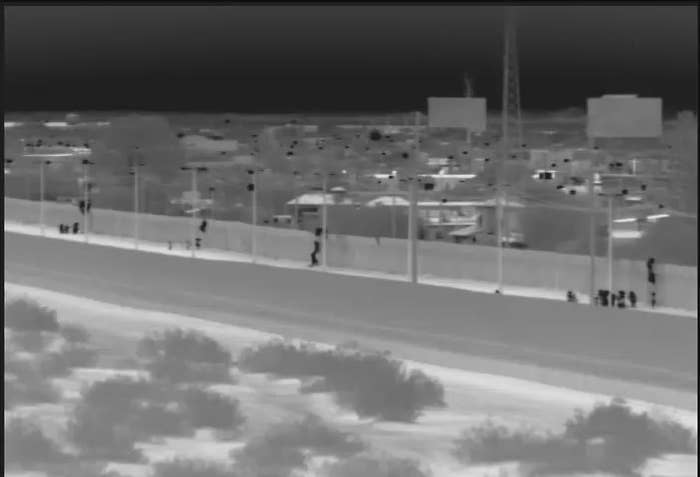
Hundreds of people from Central America have begun turning up in a remote stretch of desert between Yuma and Ajo, Arizona, in an apparent response to Trump administration policies that have made it more difficult for asylum-seekers to make a claim elsewhere along the border, human rights activists and immigration attorneys say.
A source with the Kino Border Initiative, a transnational human rights group, reported that in the last two weeks several large groups have crossed near the Lukeville and Yuma Ports of Entry in western Arizona.
Earlier this month, the Border Patrol announced that it had detained more than 240 immigrants in a 48-hour period near the tiny Ajo Port of Entry. Similarly, in November US Customs and Border Protection took into custody some 400 migrants in a 48-hour period near Yuma.
Although the groups typically number between 20 and 80, groups of more than 100, including children and elderly people, have been detained in recent weeks.
Human rights activists in Mexico first started seeing increases in families and children crossing the desert earlier this year after the Trump administration began separating parents from their children amid reports that the processing of asylum applications had slowed to a crawl.
Groups of asylum-seekers traveling through the Sonoran desert is humanitarian activists’ worst nightmare: in the summer, temperatures routinely reach 115 degrees, while winter temperatures can easily fall to freezing. There are few roads, and the rugged terrain can be taxing and deadly. Dehydration is a major concern even in winter because of how dry the desert is.
The dangers aren’t just natural: This stretch of the desert, particularly near Lukeville, Arizona, has become controlled by cartels that force immigrants to carry drugs across the border, often at gunpoint.
It’s unclear whether Sonoran Desert crossings are increasing in the same way CBP has reported increased apprehensions along the similarly remote New Mexico border. A DHS spokesperson provided no meaningful response to specific questions about how many people have been detained along the Arizona border, whether any children have become ill or died, and whether DHS will shift resources to the Sonoran desert. Instead, she issued a statement chastising a judge's decision in an immigration case and urging Congress to fund the border wall.
While DHS issued no solid information about what’s happening in Arizona and its response to those developments, it appeared to be on Homeland Security Secretary Kirstjen Nielsen’s mind. In addition to touring the El Paso CBP sector — which has been subject to international scrutiny after the deaths of two children in its custody — Nielsen was also scheduled to visit parts of the Yuma sector on Saturday.
Meanwhile, people crossing the remote Arizona and New Mexico border faced harsh weather conditions.
On Thursday night, a blizzard hit much of New Mexico, and temperatures in Lordsburg, Deming, and Antelope Wells, New Mexico — all of which are the sites of overcrowded and ill-equipped temporary detention centers — were below freezing. In El Paso — where CBP has taken to freeing at the local bus station hundreds of asylum-seekers whose requests are pending, it was also at or below freezing for much of the night.
